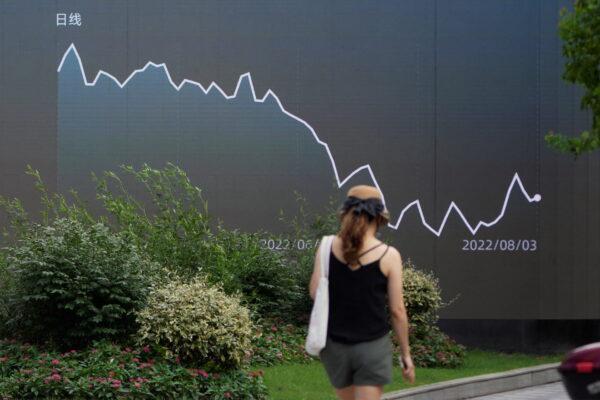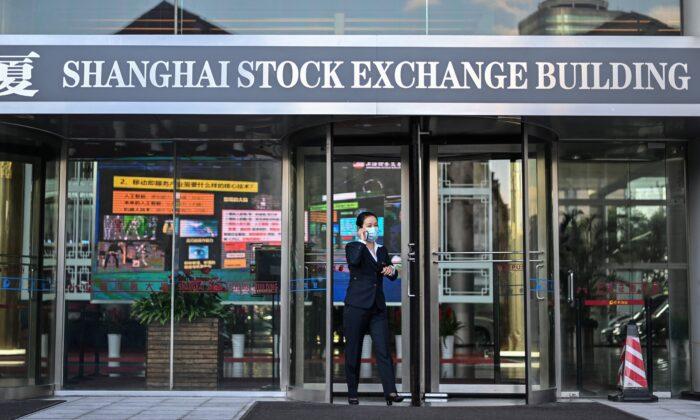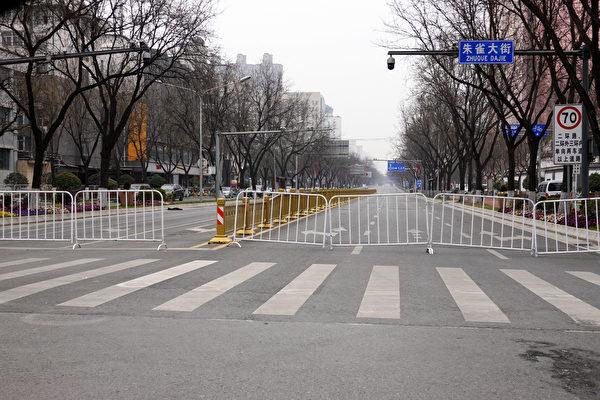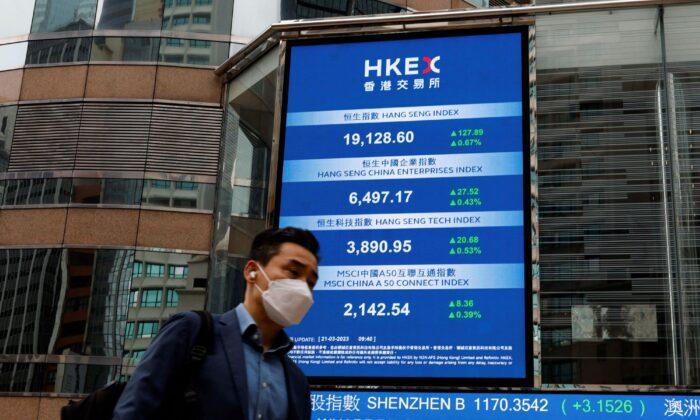Despite Chinese SOE (state-owned enterprise) stocks surging due to the communist regime’s newly hyped system of “valuations with Chinese characteristics”—which has temporarily boosted Chinese investors’ confidence in such shares—the Shanghai Stock Exchange (SSE) Composite Index dropped below the psychologically important 3,200-point level this week.
An Artificial Valuation System
Last November, China Securities Regulatory Commission Chairman Yi Huiman proposed a system with “Chinese characteristics” to evaluate Chinese companies. It was claimed the move would better estimate the value of SOE shares and more efficiently allocate resources.In response to the new valuation system, the Shanghai-based Wind Info, a financial information service, generated a series of indexes for some 79 SOE stocks with such “Chinese characteristics.”
After hitting 3,400 points on May 8th, the SSE Index continued to decline for nearly two weeks. On May 25, it fell below the 3,200 point mark again. On the 30th, it fell to a 3,189-point intraday low before closing at 3,224 points.
Economist Gong Shengli said that “The Chinese stock market has been falling, non-stop”—and especially since the end of the COVID-19 lockdown.
He explained that the assignment of so-called “Chinese characteristics” to SOE stocks was Beijing’s tactic to cover up the failing Chinese economy.
The general trend of the Chinese stock market since 2015 has been to hover around the 3,000-to-3,200-point mark, with Chinese investors tending to focus on short-term bumps and dips. “The new valuation system cannot change the general trend of the Chinese stock market,” Gong said.
He believes that Beijing is embarrassed about its economy being stifled by a lack of computer chips—a consequence of the ongoing U.S.-China trade war. The new valuation system was meant to provide some support to high-tech SOEs and, thus, to stimulate a faltering economy.
However, Gong believes that it spells out the bitter fact that the communist regime—from central to local levels—is running out of money.

The Bizarre Chinese Stock Market
Economist Li Hengqing describes the Chinese stock market as “bizarre.”The surge, however, did not last long. The Chinese stock market collapsed in June of that year.
Li said that in the real world, the performance of stocks relies on the real market. The Chinese authorities’ artificially high appraisal may attract inexperienced investors, but the rally will be short-lived.
“The Chinese authorities were hyping the so-called ‘fair valuation’ for the SOEs in the hope that their stock values would rise, and thus attract investors; in turn, the increased investment would then resolve the finance-shortage issue,” Li said in explaining the communist regime’s logic behind the new valuation system.
However, the regime has failed to recognize that the SOE’s low operating efficiency will continue to limit their market value, he said.
“The SOEs have monopolized the market by relying on state power and policies,” Li said—which stands in stark contrast to the relatively weak competitiveness of the SOEs in the market.
Li believes the regime is anxious to attract Chinese investors to fill in the gap left by the loss of such foreign investors. However, his advice to Chinese investors is: “Don’t be fooled.”






Friends Read Free